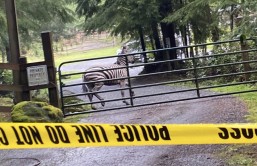The National Oceanic and Atmospheric Administration (NOAA) has just released its spring forecast and made it clear that while El Niño will soon give way to its cold counterpart La Niña, before it does, the U.S. will have to endure a combination of flooding and intense drought as the weather phenomenon reaches its final moments.
The U.S. has already received heavy amounts of rain and snow, with this past December being the wettest on record, and more heavy rainfall is making its way to the country through periodic, torrential downpours. Not only will this lead to slow rising rivers and streams, but also widespread flash flooding that NOAA forecasters are describing as "quite significant" in terms of risk.
Despite their unassuming name, moderate floods are actually very dangerous and should not be taken lightly. If these floods are severe enough, evacuation might be necessary.
"Flooding is the leading cause of severe weather deaths, half of which happen in vehicles," said Thomas Graziano, acting director for NOAA's National Water Center.
While the coming rain may seem like a good thing, drought relief will still elude the country due to the pattern of El Niño. The East will experience floods, but the rain will not make its way West, and the Northern California break from rains will be balanced out by drought gains in the south.
"Over the last four years we've dug a very deep hole, missing between one and two years of precipitation," said Rob Hartman, hydrologist-in-charge for NOAA. "To ease the drought in any meaningful fashion, we'd need 150 percent of normal precipitation. We've come close in some areas, but some areas have been below average, which makes the hole even deeper."
Ultimately, even a weakening El Niño does not mean that we are out of the woods when it comes to inclement weather. However, on the positive side, the current report gives us the advantage of predictability, allowing us to not only prepare and help vulnerable communities in the U.S., but in other countries as well. This is especially important in areas that already face setbacks, as these events will eradicate any previous progress and force communities to start over again and again.








